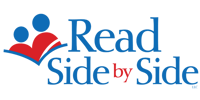What Is Assessment?

At the roots, an assessment is an inference about a child’s progress based on the collected samples of that child’s behavior and thinking. The quality of a teacher’s inferences about a child can be determined by the reliability and validity of the data. If the assessment is reliable, the data collected is both accurate and consistent. A valid assessment measures the right attributes of reading so that the inferences lead the teacher to the right conclusions and actions.

Questions guide the process of inferring or evaluating students’ success in reading. In school these questions include:
- Do students read?
- Is the process of reading easy or difficult for them?
- Why are they having difficulty?
- Do they understand what they are reading?
- Is their interest and motivation to read increasing?
Ultimately, teachers need this information for three reasons:
1. To know whether instruction and classroom activities are working;
2. To motivate their students; and
3. To evaluate student learning and give a final grade.
Assessments and grading require a systematic process of collecting and analyzing evidence to answer these questions. Both formative and summative assessments can be helpful to the process.

Formative Assessment
Formative assessments guide instruction. Firm evidence shows that formative assessment is not only valuable in raising standards of achievement (Black & Wiliam, 2009); it is essential to effective instruction and successful learning, because it is through the process of assessment that teachers learn who is making progress and how to guide instruction. Formative assessment benefits students and teachers in significant ways. For students, formative assessment provides immediate feedback to drive the learner forward. As the teacher assesses, she sees how best to respond to the strengths and difficulties of the learner. In such an environment, students—especially those who are struggling—improve more rapidly (Wiliam, 2006). Seeing students respond positively to instruction increases a teacher’s passion and interest in the profession. Both teachers and students feel their own confidence and self-efficacy grow.
Summative Assessment
Summative assessments evaluate the outcome of instruction. They are formal tools designed by professionals to assess the effectiveness of a reading program or the changes in a district’s reading curriculum (Harlen, 2006). Results from these high-stakes tests are useful for school administrators and public officials to evaluate a literacy program, but they are far from useful for classroom teachers, or their students and parents. When a commercial publisher designs a test, it decides what will be assessed, and its decisions might not answer the teacher’s questions.
Concluding Thoughts
The Read Side by Side Reading Program naturally lends itself to the formative assessment process, and it is more valid, reliable, and useful than most summative and commercial testing. By listening to your students during turn and talk and book club discussions, by reading your student’s written responses, and by monitoring their progress during one-on-one conferences and running record assessments, you will gain data that is consistent and valid. Less time will be needed for testing, and more time will remain for explicit instruction, rich dialogue, and the enjoyment of literature.
The Assessment and Intervention Guide for the Read Side by Side Reading Program outlines how to use formative and summative assessments to guide reading instruction and plan interventions for students. If you are using the Read Side by Side Reading Program, this book will be your go-to-guide.

Are you looking for a reading program to increase motivation and achievement?
We are confident the Read Side by Side Reading Program will be the right fit for your next curriculum adoption! To learn more about the program and request a sample kit, connect with one of our advisors!

Written by Peter Dewitz
Researcher & Consultant
Read Side by Side Publications, LLC
References
Black, P., & Wiliam, D. (2009). Developing the theory of formative assessment. Educational Assessment, Evaluation and Accountability (formerly Journal of Personnel Evaluation in Education), 21(1), 5.
Harlen, W. (2006). On the relationship between assessment for formative and summative purposes. Assessment and Learning, 2, 95–110.
Wiliam, D. (2006). Formative assessment: Getting the focus right. Educational Assessment, 11(3–4), 283–289.




